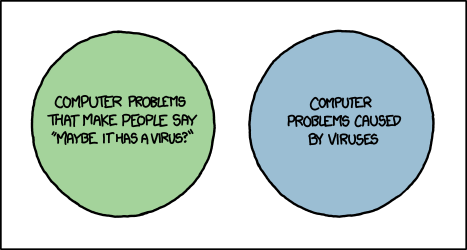As the 12th annual National Cyber Security Awareness Month enters its final week, we’ll look at the future of technology and the potential vulnerabilities that come with it. As President Barack Obama has stated, “Cyber threats pose one of the gravest national security dangers the United States faces,” and that is why we all need to be mindful of the “smart world” we now live in. It is our shared responsibility to be aware of the importance of cyber-security as the number of Internet-connected devices around us increase. Surveys show that in 2014, 47% of adults in the United States had their personal information exposed by hackers.
Our phones, tablets, and personal computers are the most obvious devices that need protection, but what about the “Internet-Of-Things” devices? From vehicles to watches to kitchen appliances, more and more of our household objects are becoming “Smart” items, and each device stores and transmits private personal data. Health monitors, baby monitors, coffee makers, home environmental controls; whatever the device, if it connects to the internet, it can potentially be exploited by a determined hacker.
This is something that all device manufacturers need to keep in mind, since most consumers won’t usually have the ability to install security software on these devices themselves. But there are a few security tips that we should all keep in mind:
1. Protect your network. This means changing the default Administrator password on your router, using strong (WPA2) wireless network encryption, and changing your WiFi password occasionally. See our “Tips for Improving Router Security” blog post for more information.
2. Protect the devices you can. Whether you use a PC, Mac, or Android device, you will need an antivirus application to protect you against malware. If your network is breached, having devices that are well protected will sometimes deter a hacker who is looking for easy targets. Webroot provides this defense with cloud-based malware detection that automatically stays up to date.
3. Don’t be an early-adopter. When a cool new device comes out, it’s tempting to be among the first to have it… but the first versions of any “smart” products are the most prone to security flaws. By waiting until a second generation device or a first software update for the device, you may reduce your risk of using an insecure product.
While the technology of the future becomes increasingly Internet-connected, it is our shared responsibility to remain vigilant about security and ensure that it is incorporated at every point of access.
For more information about this month’s themes and events, see the Official Department of Homeland Security National Cyber Security Awareness Month page.

















 1982 – The first threat that occurred was the Elk Cloner (this however did not actually affect the Mac) which would cause the Apple II to boot up with a poem:
1982 – The first threat that occurred was the Elk Cloner (this however did not actually affect the Mac) which would cause the Apple II to boot up with a poem: 2004– Amphimix a program which is also a MP3 file. When launched it displays a dialog box which reads “Yep, this is an application. (So what is your iTunes playing now?)” It then loads itself into iTunes as an MP3 file called “Wild Laugh”, playing four seconds laughter.
2004– Amphimix a program which is also a MP3 file. When launched it displays a dialog box which reads “Yep, this is an application. (So what is your iTunes playing now?)” It then loads itself into iTunes as an MP3 file called “Wild Laugh”, playing four seconds laughter. 2006 – Leap is widely considered to be the original Mac Trojan. Leap used iChat to spread itself; forwarding itself as a latestpics.tgz file to the contacts on the machine. Inside the Gzipped Tar File (.tgz) was an executable file masked as a JPEG. When executed, it infected all Cocoa applications.
2006 – Leap is widely considered to be the original Mac Trojan. Leap used iChat to spread itself; forwarding itself as a latestpics.tgz file to the contacts on the machine. Inside the Gzipped Tar File (.tgz) was an executable file masked as a JPEG. When executed, it infected all Cocoa applications. 2008 – MacSweeper, Mac’s first ‘rogue’ application (a fake antivirus misleading users by reporting infections that doesn’t exists). When the infected user tried to remove the “infections”, MacSweeper asked to provide credit card details and pay $39.99 for a “lifetime subscription serial key.”
2008 – MacSweeper, Mac’s first ‘rogue’ application (a fake antivirus misleading users by reporting infections that doesn’t exists). When the infected user tried to remove the “infections”, MacSweeper asked to provide credit card details and pay $39.99 for a “lifetime subscription serial key.” 2011/2012 – Flashback was disguised as a Flash player download and targets a Java vulnerability on Mac OS X. The system is infected after the user is redirected to a compromised bogus site, where JavaScript code causes an applet containing an exploit to load. The Flashback malware was the largest attack to date, hitting more than 600,000 Mac computers.
2011/2012 – Flashback was disguised as a Flash player download and targets a Java vulnerability on Mac OS X. The system is infected after the user is redirected to a compromised bogus site, where JavaScript code causes an applet containing an exploit to load. The Flashback malware was the largest attack to date, hitting more than 600,000 Mac computers.





